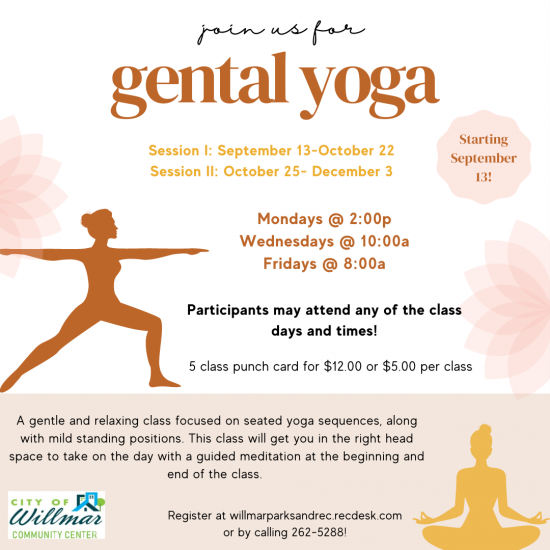
The Yoga Sutras of Patajali are a collection of 196 sutras written in Sanskrit. The texts were compiled by Patanjali in the early centuries of CE. He synthesised the wisdom and traditions about yoga. These sutras were originally a work in progress. They are now one of the most important resources for practicing yoga worldwide.
The Yoga Sutras are comprised of four chapters. The first one is devoted to enlightenment and the next four chapters discuss the process to reach the goal. The 52 sutras outline the benefits of meditation, kriyas, and niyama (pilates). The 54/55 sutras detail Ashtanga and Karma yoga. These sutras provide information about the benefits of regular meditation.
Patanjali's Yoga Sutras are considered the foundational text of yoga, and contain 196 short verses that are the basis of the practice of yoga. Though they are believed to date back to 400 B.C., scholars believe that Patanjali was not the creator of yoga, but rather a great expounder of the art. The sutras are divided into five levels called padas.
The eighth limb is samadhi. This state of pure contemplation and meditation is the highest goal in yoga. Nirbija, also known to be seedless contemplation or the state of complete separation from the spirit, is described in the Sutras. This means that the mind is free, and there is no longer any ego or matter.

Yoga is a spiritual endeavor. The Yoga Sutras provide the basis of this practice. It is a way to observe the principles of nature. The three qualities of nature are sattva, rajasa, and tamasva. The first and most important quality of nature is sattva, yama. It is also the hardest to attain. It is hard to comprehend the purpose and importance of the other three. However, ahimsa stands out as the highest.
The Yama, Niyama and the third section of the Yoga Sutras' first book are divided. The first section is a biography about Patanjali, the famed yogi. The yoga sutras, the most important, are found in the second book. They also provide information on the history of yoga. The sutras not only provide historical background but also discuss the origins and evolution of the practice.
In the original text, Patanjali's Sutras are divided into three sections: The Mahabhashya Pranayama and The Bhashya. The book's third chapter, the Mahabhashya is a crucial chapter. It describes the principles and practices of yoga, and the stages of enlightenment. The fourth chapter is Panini's defense.
The Yoga Sutras in the second section of the book are the most popular of the Patanjali - inspired texts. Although the Sanskrit language is used for the words, it's the Sanskrit meaning of "thread" that the word sutra refers to. The Sutras are part of Hindu Scripture. It is the core of yoga. Its composition dates range from 250 BCE to the early centuries of the first millennium CE.
Yoga Sutras have a dense, intricate, and complex language and content. Due to their difficulty, a comment on the Yoga sutras would be highly recommended. It is however not essential to the Yoga sutras. The translations of Yoga sutras are subject to some debate, but the core of the book is the text. Some versions of this book use the term "asana", to describe a single position, while others use it to indicate multiple postures.

The Yoga Philosophy Sutras of Patanjali are considered one the most important yogic texts. You can learn the Sutras whether you are looking to do yoga in modern times or the old techniques. And they're very relevant for modern yoga. Ultimately, it's your choice how to practice the Yoga Sutras. There are countless benefits to learning the Yoga Philosophy of Patanjali.
The vast majority of sacred texts contain Patanjali’s insights. His writings describe the eight limbs and five types of yogi body, as well as the five qualities of a good yogi's brain. These Sutras provide inspiration and should be studied. This book will explain the basic principles and practices of Yoga.
FAQ
What is butter good for?
Butter is one of the best sources of saturated fats. This type is beneficial for healthy skin and hair as well as stronger bones.
Butter also contains vitaminK, which prevents bleeding after cuts and bruises. Vitamin K works together with vitamin C to prevent bruising.
Butter is also rich with minerals, such as calcium and phosphorous. These elements are good for teeth and bones.
Butter is not without its flaws. Butter has high cholesterol. Studies show that too much cholesterol can increase your risk of developing heart disease.
Butter is also high in saturated fat which can lead to obesity and higher cholesterol.
If you have to have butter, spread it on bread instead of dipping it in soup or salad. Bread absorbs more oil than potatoes or pasta.
Is it true that kidney stones can be caused by overeating protein?
Protein helps to maintain healthy bones, tissue, and skin. Over-consuming protein can result in calcium being excreted through the kidneys. In turn, this can result in kidney stones.
It is important that you note that not all people develop kidney stones when they consume more than 2 grams of protein per kg (2.2 pounds). It is possible to eat high levels of protein without developing kidney stones.
You can prevent kidney stones by watching your sodium consumption. Sodium helps regulate water balance in the kidneys. Too much sodium results in a higher risk of developing kidney stones.
You may also want to reduce your protein intake in the event of kidney stones. The majority of adults need protein for half their daily caloric needs. A reduction in protein intake will likely result in weight loss.
If you do decide to eat more protein, don't go overboard. Do not eat more than 20% of your daily calories from protein.
Do I have to exercise every single day?
No! Do at least 30 minutes of moderate intensity physical activity five days a week. That could mean walking fast enough for you to get slightly out of breath and biking hard enough for you to sweat.
What is the best 7-day workout program?
A seven-day exercise program should consist of three days per week of cardiovascular training (running, biking, swimming), two strength exercises (using free weights, weight machines), and one flexibility/core workout (yoga, Pilates). Each activity should be done at least once per week. The total time for each session should not exceed 45 minutes.
Cardiovascular Exercise: Running/Biking/Swimming
You should aim to get at least 60 mins of cardio exercise per week. Aim for 75 minutes per week to get the best results. Cardio exercises can help improve blood flow and stimulate muscle growth.
Strength Training
Cardio exercises target your heart and lungs. Strengthening your muscles and bones is the opposite. Strength training is a great way to build lean muscle mass that helps you burn calories even if you are not actively exercising.
Flexibility and Core Workouts
You can strengthen your entire body by strengthening flexibility and core exercises. Both yoga and Pilates can be great choices.
What is the best exercise for men over 40 years old?
The best workout for older men usually increases energy and stamina.
It is important to note that most people over 40 experience a loss of testosterone in their bodies, resulting in lower sex drive.
You can still exercise, however. Studies have shown that some men can get more testosterone from regular aerobic exercise.
If you are looking to improve your sexual performance, an aerobics workout is the best option.
Statistics
- According to the American Heart Association, blood pressure should be checked at least once every two years, beginning at age 20. (my.clevelandclinic.org)
- Candidates and applicants must pass all four tests at 70% (minimum level) to graduate from Basic Deputy U.S. Marshal (BDUSM) Training. (usmarshals.gov)
- Cardmembers earn 5% Back at Amazon.com with a Prime Credit Card. (amazon.com)
- By John Thompson Take a whopping 38% off a set of PowerBlock Pros. (menshealth.com)
- Are You One of the 20% of Guys (mh.co.za)
External Links
How To
What nutrients does a man need daily?
Daily nutrition is essential for men's healthy growth. Vitamins, minerals, vitamins, nutrients, carbohydrates, fats and fiber are all essential for the body.
Also, the male body requires certain nutrients at specific times during the day. When you're sleeping, your body uses energy from food for hormones, proteins, and enzymes. Protein is needed to build muscles and repair tissue damaged when you wake up.
At night, your body breaks down fat and stores the extra energy as glycogen. During this time, your body needs fewer calories but still needs sufficient nutrients. If you feel hungry, you may consider having a snack during the evening.
When you work out, you need adequate levels of carbs and protein to fuel your muscles. If you exercise hard, you might feel muscle soreness.
You must ingest carbs and protein within two hours of training to prevent this. To get energy from glucose, your body will start to degrade stored glycogen.
Additionally, it is important to eat protein right away after your workouts are over. This prevents the breakdown of muscle tissue that occurs while you sleep.
Your body makes lactic acid when you are doing intense physical activities. Your body can build up lactic acid in the bloodstream which causes fatigue. Avoid this by eating foods rich in carbohydrates such as fruits or vegetables.
Carbohydrates offer your body the energy it needs for recovery from exercise.
Your diet may include lean meats like fish, eggs, milk cheese, yogurt or beans as well as lean proteins such as fish, eggs, egg yolks, cheese, yogurt, bean, peanuts and seeds.
All these foods are high-quality sources of protein. Protein aids in muscle growth and repair of damaged tissues. Protein is also necessary for the production of sex hormones such as testosterone.
Good skin, hair, and joint health requires adequate dietary fats. Healthy men require between 20% and 35% of total caloric intake from fat.
Fat helps protect your heart health and prevents cancer. It helps keep your brain working properly.
Most of the fat you need can be obtained from vegetable oils, including sunflower oil (or soybean oil), peanut oil, peanut oil, soybean oil, and peanut oil.
These oils are high in monounsaturated fatty acids (MUFAs). MUFAs help lower cholesterol and reduce inflammation. They protect your cells and prevent damage from free radicals.
Saturated oils (SFAs), found primarily in animal products such meats, dairy products and butter, are known to raise LDL ("bad") cholesterol. SFAs increase LDL ("bad") cholesterol, and increase triglycerides. They are also good for weight loss and belly fat.
Plant-based oils such as vegetable oil, nuts, seeds, or grains are rich in polyunsaturated fats (PUFAs). PUFAs help improve cardiovascular function, and lower inflammation. They also reduce blood sugar, cholesterol, and other inflammatory factors.
Erectile dysfunction can often be a problem for men who have low HDL ("good") levels of cholesterol. Saturated fats are a major source of bad cholesterol. This lowers good cholesterol.
Red meat and pork are a common source of prostate problems in men who eat a lot. Nitrites convert to nitrosamines when cooked at high temperatures. These compounds can cause cancer.
Most processed meats contain nitrites or other harmful chemicals. You should avoid them.
The American Heart Association recommends eating no more than 2 servings of red meat per week. Instead, choose poultry, fish, legumes, tofu, whole grain bread, and cereals.